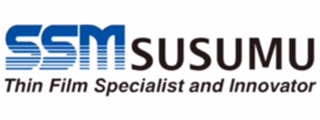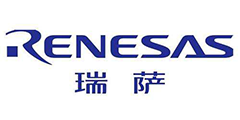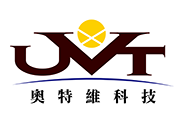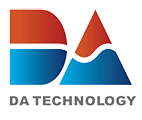- Ameya360 Component Supply Platform >
- Trade news >
- Trump tariff proposals could affect electronic goods
Trump tariff proposals could affect electronic goods
US President, Donald Trump, has proposed to further increase the $50billion tariff he has already placed on Chinese imported products by 25percent.
The increased tariff comes after an on-going trade ‘battle’ between the two counties, and will affect some 1,400 products. Imports of Chinese steel and aluminium products have grabbed the news headlines, but further analysis of the US Government’s Notice of Determination of Action Pursuant to Section 301: China Acts, Policies and Practices Related to Technology Transfer, Intellectual Property and Innovation, reveals that many electronic components are also included.
According to a report from the BBC, analysts have also "warned of the risk of a full-blown trade war for the global economy and the markets, and believe ongoing behind-the-scenes negotiations between the two giants are crucial.”
The current list released on April 3 includes all tantalum, aluminium, ceramic, paper or plastic capacitors, many carbon, composition or film resistors, fuses, relays, LEDs, transistors, thyristorslithium, air zinc and silver oxide primary cell batteries. It also includes some consumer products, many automotive products and industrial equipment.

Dean Garfield
Dean Garfield, president and CEO of industry trade group, Information Technology Council (ITIC), released a statement in March in response to the tariff, urging the US president to reconsider his decision.
“We appreciate that the Trump Administration has listened to industry’s requests for a comment period,” Garfield began. “While we look forward to providing our feedback on the options the administration has outlined, we remain concerned with the administration’s focus on tariffs. These measures could violate international obligations and – more importantly – would punish U.S. consumers, businesses, and workers for China’s action.
“As the administration considers how it will address these serious issues, we encourage it to act consistent with international obligations and in close collaboration with other countries. In entering the WTO process, the administration should simultaneously engage the Chinese in negotiations to reach a settlement. The agreement should ensure that China takes concrete steps to curb its harmful practices and is held accountable for actually doing so.”
The ITIC also constructed a letter to President Trump, which was signed by nearly four dozen business associations. In the letter, the groups outlined how tariffs harm US companies and American workers across the economy, greatly limiting market opportunities in China for US manufacturers, service providers, content creators, and small businesses.
While, members of the International Distribution of Electronics Association (IDEA) are in the process of formulating a position paper to submit to US Trade Representative. This will request that electronic components are removed from the Annex during the consultation process which begins with submission of written comments on 11 May.
According to ecsn and IDEA Chairman, Adam Fletcher, the application of the proposed tariffs to these electronic products would obviously increase direct costs to customers in the US, but also transactional costs for manufacturers and manufacturer authorised distributors involved in the import of goods from China into the US and then onward shipment to international customers. To avoid the tariff manufacturers and manufacturer authorised distributors would have to drop ship goods or pay the incoming tariff and claim it back on exported products, they will also have to ensure goods were not re-shipped into the US from China via a third-party country. “It’s an additional administrative burden for the entire electronic components supply network where the lead-times for passive components are already significantly extended,” said Fletcher.
“There have been some suggestions that the current products listed on the Harmonised Tariff Schedule Annex are part of a wider negotiating strategy between US and Chinese Officials,” continued Fletcher. “I hope that is the case, but our industry must react quickly to request that all electronic components are removed from the proposed schedule during the consultation process”.
However, the findings of the investigation into China’s acts, policies and practices related to technology transfer and intellectual property and innovation by the US Trade Representative concluded they are an ‘unreasonable or discriminatory and burden or restrict US commerce’.
“We need to prepare for the worst and hope for the best,” concluded Fletcher.
Garfield has now added to his previous statement, commenting: “If history is any indication, these proposed tariffs will not work and will be entirely counterproductive,” he said. “Tariffs penalise US consumers by increasing prices on technology products and will not change China’s behaviour. Instead, the administration should act consistent with international obligations and work with other countries to address systemic issues with China.”
Online messageinquiry

Power 9 May Dent x86 Servers
- Week of hot material
- Material in short supply seckilling
| model | brand | Quote |
|---|---|---|
| RB751G-40T2R | ROHM Semiconductor | |
| BD71847AMWV-E2 | ROHM Semiconductor | |
| TL431ACLPR | Texas Instruments | |
| MC33074DR2G | onsemi | |
| CDZVT2R20B | ROHM Semiconductor |
| model | brand | To snap up |
|---|---|---|
| BU33JA2MNVX-CTL | ROHM Semiconductor | |
| ESR03EZPJ151 | ROHM Semiconductor | |
| STM32F429IGT6 | STMicroelectronics | |
| BP3621 | ROHM Semiconductor | |
| IPZ40N04S5L4R8ATMA1 | Infineon Technologies | |
| TPS63050YFFR | Texas Instruments |
- Week of ranking
- Month ranking
Qr code of ameya360 official account
Identify TWO-DIMENSIONAL code, you can pay attention to


Please enter the verification code in the image below:






















